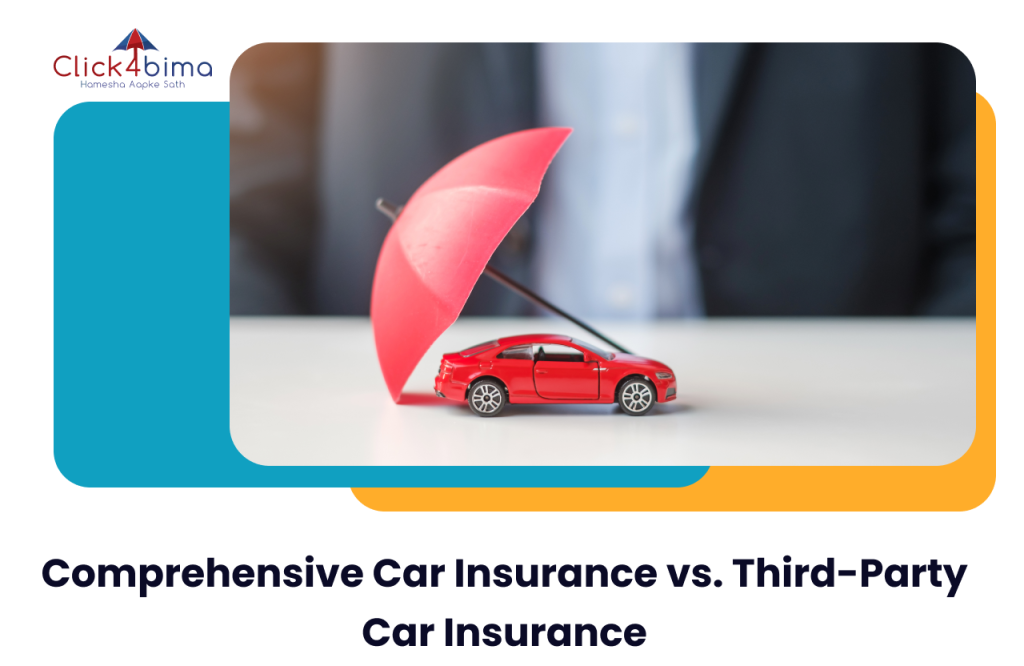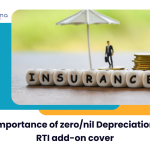Car insurance is a must and choosing the right policy is significant for insuring your car and saving your dollars. Car insurance is of two types, Comprehensive and Third-Party. They range in protection level, coverage, and pricing. In this blog, these policies are explained in detail, and the differences between them to help you decide which one is suitable for your use case.
What Is Third-Party Car Insurance
Third-Party car insurance — This is the basic and only legally required type of car insurance. It provides coverage for third parties — people and property affected by an accident with your vehicle.
Coverage Includes:
1. Bodily Injury: Covers the other driver and their passengers or pedestrians involved in an accident where you are liable.
2. Property Damage Liability This coverage repairs or replaces other people’s vehicles and property, such as buildings, if you cause an accident.
Exclusions:
• Own Vehicle Destruction: Actually, no damage to your vehicle is compensated for under the third-party insurance cover.
• Personal Injuries: It does not cover your or your passenger’s confrontation with personal injuries.
• Theft and Vandalism: If you used to go out at night very often, there are greater chances that your car would have been broken or the valuables in it could be stolen, along with vandalism.
Comprehensive Car Insurance Explained
When compared with a Third-Party insurance policy, Comprehensive Car Insurance provides more coverage. This provides everything in Third-Party insurance and additionally covers your bus from damages due to different risks.
1. The insurance policy will pay for the damages or losses caused to your car due to accidents, irrespective of whose fault it is.
2. Theft and vandalism: Covers your car in case of theft or vandalism.
3. Natural calamities: Protects against man-made disasters like floods, storms, earthquakes, etc.
4. Fire: The cover reimburses the loss incurred due to damage by fire to your vehicle.
5. Personal injury: This usually involves compensation towards medical expenses and all other losses incurred due to injuries sustained by you and your passengers.
6. Additional Coverages: Most of the comprehensive policies provide additional coverages like Zero/Nil Depreciation cover, Roadside Assistance, and engine protection.
Why Buy Comprehensive Insurance:
1. All-round Protection: It provides wide-range coverage and protects you against all types of risks that may be an accident, theft, or any natural calamity, among others.
2. More Security and Serenity of Mind: It offers you a sense of security and keeps your mind at rest as your vehicle and monetary investment would be well covered.
3. Added Value: Comprehensive policies usually incorporate added benefits and extras that can be tailored to your specific needs.
Comparison of the Two Policies
The extent of Cover:
• Third-Party Insurance: The damages and injuries caused only to others are covered. One’s self-vehicle and personal injuries are not covered under this policy.
• Comprehensive Insurance: The insurance covers one’s self-vehicle, personal injuries, theft, vandalism, and damages due to natural calamities.
Cost
• Third-Party Insurance: Comparatively cheaper due to very limited coverage.
• Comprehensive Insurance: Costly but you get a wider scope of protection with added advantages.
Legal Requirements
• Third-Party Insurance: Most regions require this minimum for on-road driving.
• Comprehensive Insurance: It offers a wider extent of cover than the simple fulfillment of legal requirements.
Financial Implications:
• Third-Party Insurance: You will have to bear the repair expenses for your own vehicle in case of an accident, personal injury, or theft.
• Comprehensive Insurance: The repair expenses for your car are covered. This reduces the expenditures you will incur in case of accidents and other insured events.
Which Policy and When
Third-Party Insurance
• Older Vehicles: When your car is much older, holding less market value, the cost of Comprehensive insurance may not be worth it.
• Budget Constraints: If you are on a tight budget and only have to meet the legal requirements, third-party insurance is super cheap.
Comprehensive Insurance:
• Newer or Expensive Vehicles: For cars that are new or of high value, Comprehensive insurance gives better protection and value.
• Frequent Drivers: If one drives frequently or in areas prone to natural disasters or high crime rates, Comprehensive insurance does provide added security.
• Desire for Complete Coverage: If one desires complete coverage that would offer extensive cover to both the vehicle and injuries to a person, then Comprehensive insurance is the better option.
Conclusion
There is a difference in choosing between Comprehensive and Third-Party car insurance, depending on your particular needs, budget, and the value of your car. While Third-Party insurance satisfies the legal requirement and the premiums are cheaper, Comprehensive insurance gives wider coverage for peace of mind. Carefully judge the needs and valuations of your vehicle before deciding on which one to choose, with professional advice from an insurance advisor if necessary.


